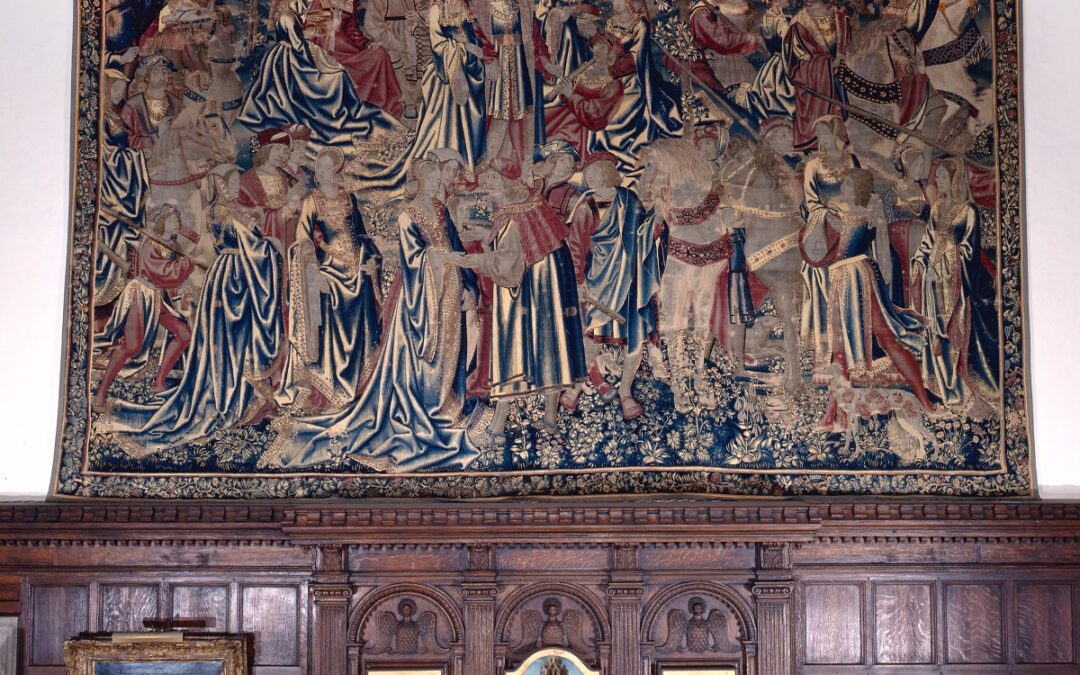
by NRF User | Jan 3, 2024
Shown here is one of a set of three tapestries bought by James B. Duke in 1923, shortly after purchasing Rough Point. All three tapestries have scenes that evoke nobility in Renaissance Europe, including couples strolling and riding horses surrounded by musicians, a coronation, and a royal engagement.
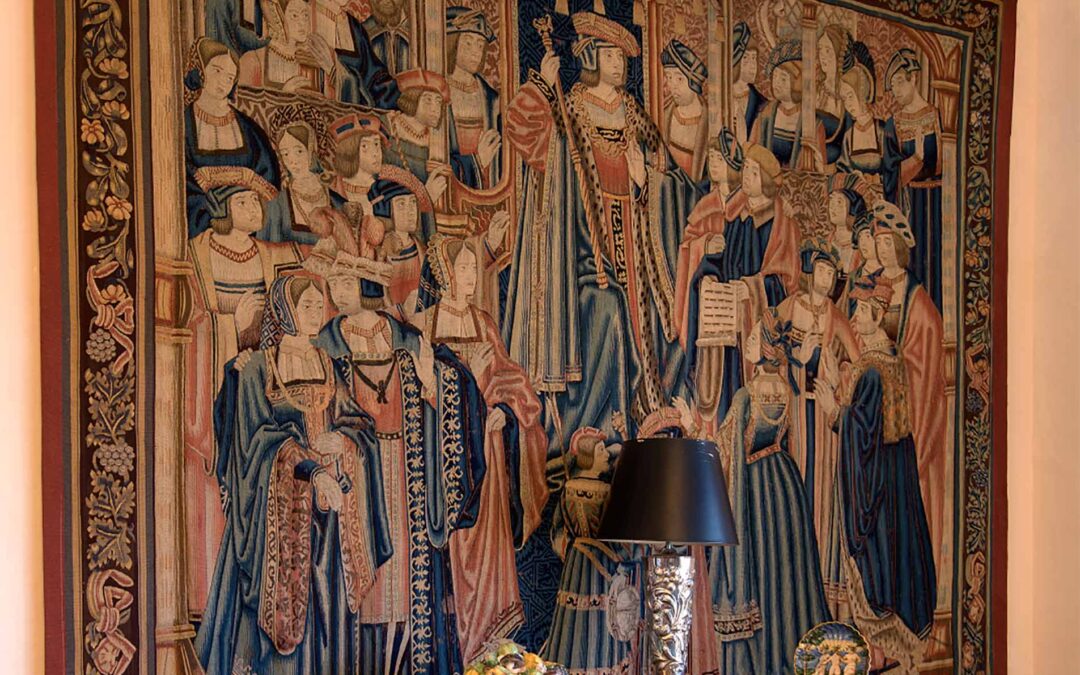
by NRF User | Jan 3, 2024
One of a pair of early sixteenth-century Flemish tapestries purchased for Rough Point in 1923. When Doris Duke closed and emptied the house of its contents in 1954, these tapestries went to Duke University where they were hung for display in the main Library. They were returned to Rough Point in 1957 and since then have hung at either end of the dining table, which Doris Duke positioned to take full advantage of the ocean views from the eastern facing windows.
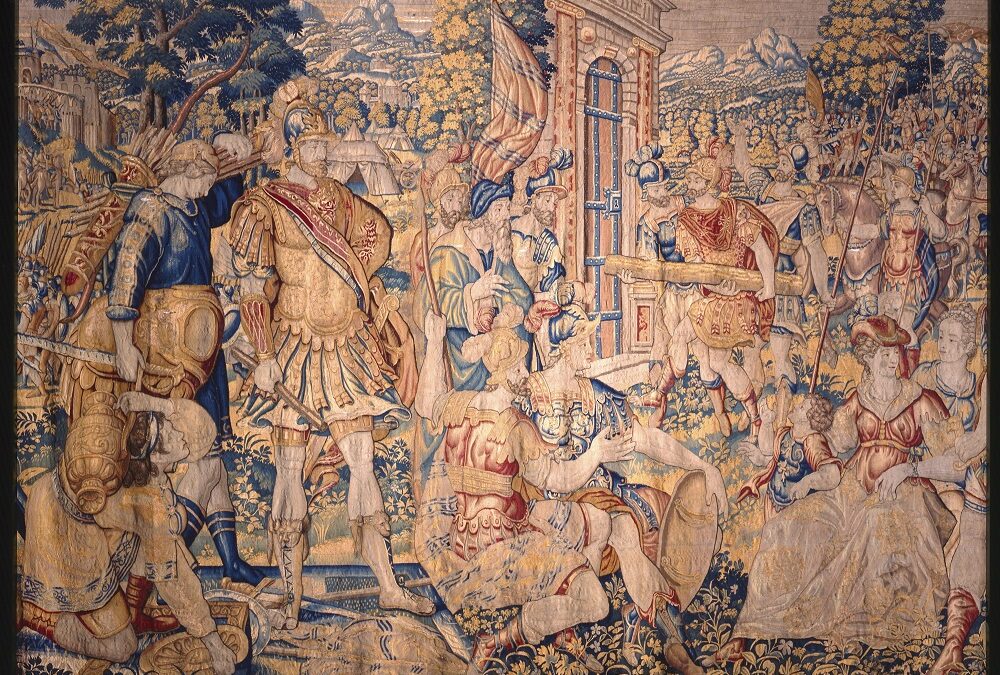
by NRF User | Jan 3, 2024
Roman general Scipio Africanus (larger figure in gold armor at the left) was a favorite example of mercy in warfare in Renaissance and Baroque art. During the siege of New Carthage, Scipio returned a beautiful female prisoner (possibly the figure seated at right) to her fiancé. For this generous act he received a ransom (the gold vessels and armor shown here at the left), which he returned to the couple as a wedding present. In return, the families of the couple pledged their allegiance to Rome. There are three other tapestries in the Stair Hall from this set, which Doris Duke bought in 1958 from the estate of Mrs. Robert L. Gerry(Cornelia Averell Harriman).
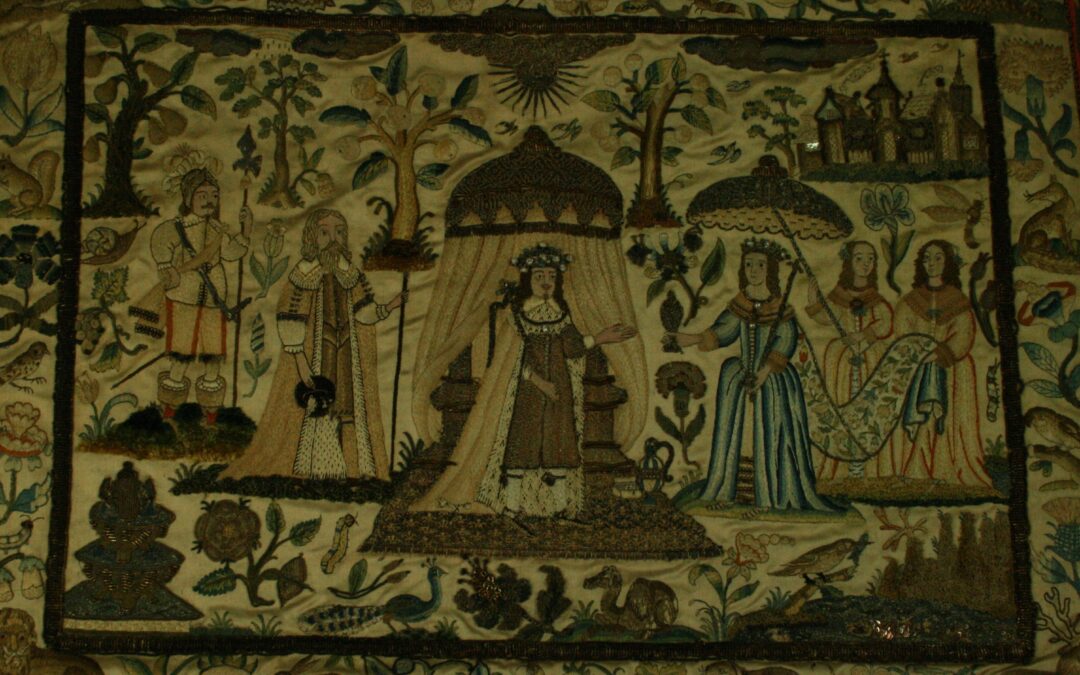
by NRF User | Jan 3, 2024
Look closely—this work of art is made up of thousands of stitches. So-called raised work or “stumpwork” were often created by wealthy women beginning in 17th-century England and were common expressions of handicraft and talent. Most raised embroidered work were not free-handed and were completed using patterns of popular themes—often featuring female figures from histories and stories. This particular example shows Esther (ca. 480 BC), a biblical figure and a great woman who saved her people, the Israelites, from annihilation. While we do not know the identity of the creator of this work, she used her needle and thread to tell a powerful story.
Purchased by Doris Duke in 1960.
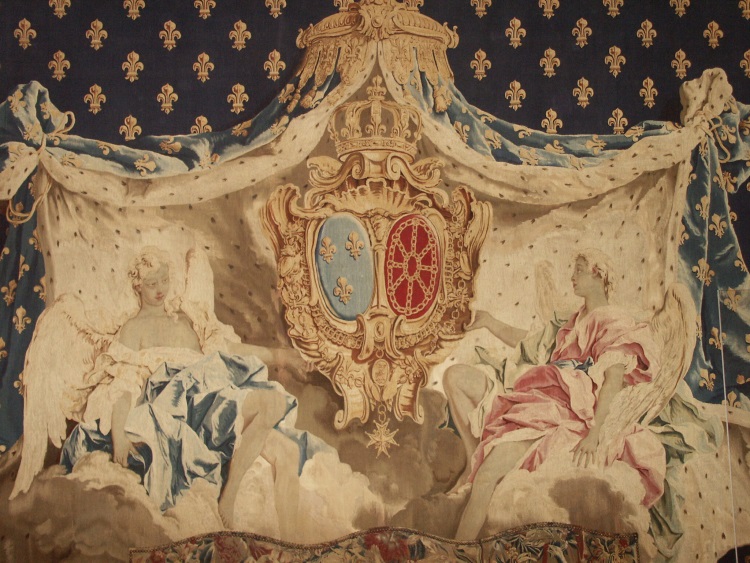
by NRF User | Jan 3, 2024
According to the records of the Beauvais manufactory, this tapestry was woven between September 1740 and May 1741. The design is based on a painting by Francois Boucher now in the Palais de Justice in Rouen, France, and it is the only version of the tapestry made from this pattern. Doris Duke bought the tapestry in New York in 1965 from the estate auction of Eleanor Elkins Widener Rice, whose Newport residence, Miramar, was just a few houses up Bellevue Avenue from Rough Point.





